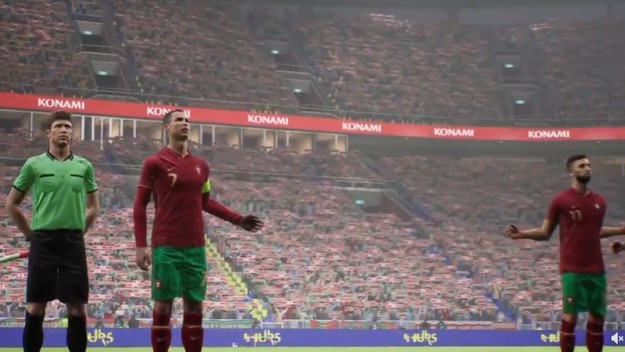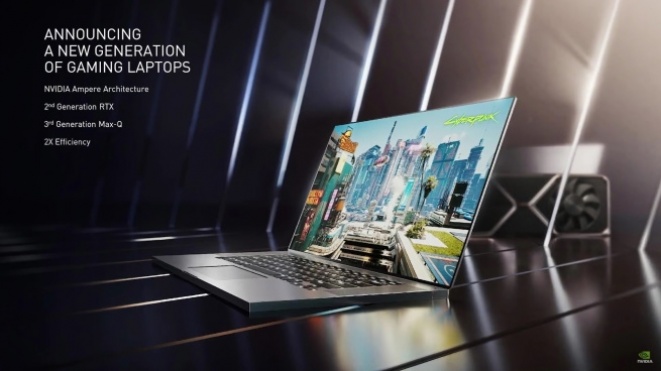Microsoft Windows 11 OS - Review
Microsoft Windows 11 OS and its somewhat surprising release almost caught most users, although we can’t say they were greeted unprepared. The delay in the transition from Windows 7 to Windows 10 is taking a long time, so everyone has the feeling that Windows 11 arrived too early after Windows 10.
Although the feeling in question is certainly largely caused by Microsoft's promise at the time that it would be the latest version of Windows OS, which will then be updated with the appropriate updates.
Although Microsoft Windows Insider users have been able to download and upgrade Windows 10 with the new beta version of Windows 11 for some time. The enthusiasm and impatience with the release of the new Microsoft operating system are not nearly as good as they used to be when reading the IT world practically "spinning" around the PC. Those times are a thing of the past, and Windows, as the leading operating system and software platform for personal computers, had to move forward and evolve.
Suffice it to recall the release of Windows 98, Windows XP, Windows 7, and finally the controversial Windows 10, which at the time of release by Microsoft, was supposed to be an operating system for all time with regular updates.
However, today, just six years since the release of Windows 10, Windows 11 has seen the light of day without the pomp and fever we used to. Even some hardware fans had a rather indifferent reaction to the statement that Windows 11 was coming out. All this speaks to today's trends and the fact that the PC desktop platform has lost its mass as some other, I would say, more consumer devices by their nature and perhaps more personal, such as phones and similar mobile devices that took over the former popularity of classic computers.
Either way, Windows 11 is ahead of us, and every time a new Windows OS comes out, it’s no doubt a reason to talk and analyze what it’s like and what it brings from the novelty.
Microsoft Windows 11 - Features
The latest updates and "upgrades" for Windows 10 have already hinted at some features of Windows 11, although we transfer all these impressions from the still digging beta version with the build code 22454 1000. But before we start with the story of the novelties, let's take a look first at the installation process itself. This time, at least when it comes to the "beta" version, Microsoft has complicated the situation a bit.
To install Windows 11, you must have a processor with at least two physical cores at 1 GHz, then 4 GB of RAM, and a 64 GB disk. So, we are talking about minimal specifications, while for more comfortable work, you need a computer with definitely stronger hardware. The requirements continue about the GPU which must be DirectX 12 compatible, the motherboard must have UEFI driver software, and the active “SecureBoot” option. We come to an item that has made a problem for many in the desire to try the first versions of Windows 11 OS.
It concerns the presence of the Trusted Platform Module in version 2.0. Many modern platforms that include processors and motherboards have this option, but most of them initially come off. So, you don't need any additional modules with encryption processors, because all newer processors already have it and the option is included in the motherboard BIOS, which you can see from the attached photo below. It is a hardware security system that helps in situations of creating, storing, and controlling the use of crypto-keys.
If you have, for example, AMD board 300 series and AMD Ryzen 2000 series processors and newer, ie Intel boards starting with those with "100 series" chipsets and Core processors of the 6th generation and newer. You must have this option already installed so that your computer is eligible for installation, provided you meet the other minimum requirements mentioned above.
However, there is a way to bypass some of these specific Windows 11 requirements during installation, including the presence of TPM 2.0, by setting up the System Registry, but it is certainly not a "user-friendly" solution for the vast majority of ordinary users who have never done so. And another requirement that differs from the previous version, in the Home version of Windows 11, you must have an active internet connection to complete the installation process.
So these are the basic requirements, while there are also specific ones whose list can be found at the following link.
And now the basics - how to get a Windows 11 installation? There are three ways. The first is to do it online with the help of Windows 11 Installation Assistant, which will use the PC HealthCheck application to check if your system is qualified to upgrade to Windows 11, and this is a fairly automated procedure - definitely the easiest for ordinary users.
See this: Windows 11 has been launched, here is where you can download it
Another way, as in the case of Windows 10 OS, to make an "online" installation on a USB flash drive using the Create Windows 11 Installation Media "online" wizard, is to practically create an installation USB from the Internet environment.
The third way is not to make an installation flash from the previous one directly from the Internet, but to download the complete ISO file of five and a fraction of a gigabyte and use a tool to create "bootable" USB memory. Such as Windows 7 USB DVD Download Tool, to make an installation USB "Offline" without an internet connection ... which in our opinion is the fastest and safest way.
During the installation, you will be greeted by a menu layout and system similar to the one you saw in Windows 10 OS, while the completion of the installation is accompanied by a slightly modified, more precisely, redesigned screen system with questions about individual options to complete the process.
By the way, the choice of versions is enriched in addition to the standard Home and Pro variations with the Workstation Pro, which should be associated with high-performance computers. Pvp Isak is valid only for the first Insider Preview Windows 11 versions, and it remains to be seen whether it will later appear in the regular offer of Microsoft OS.
What you will notice is a little more commercialization and a handful of consent questions about the use of your data, location, and everything else that Microsoft can use, such as your usage habits, all to assist in improving the work experience and use of the software. In general, I believe that many will not like this, especially in light of current events.
Microsoft Windows 11 - Interface layout
After installation and after the operating system is loaded for the first time, you will be greeted by a more or less familiar environment - a large desktop with a "taskbar" in the lower part. The "wallpaper" theme has been changed, as well as the position of the basic icons in the "taskbar", which, like those on macOS, are now located in the central part.
Fortunately, there is no "rollover" effect that Mac users are used to because I believe it would be too much :) If you are bothered by their central position and you are used to the WinStart key being in the lower-left corner, you can return them to their old position. This way, they evoke a feeling of flattery on mobile devices and associate commands with touch - it just makes you touch it, not click.
The icons and their appearance have been given a more modern, nicer, and somehow softer design, so everything seems undoubtedly more modern and in line with current trends. It's only now that you see how "demode" Windows 10 is as if it's drawn with a ruler, and that's a detail that pleases. Essentially, there are no radical changes, but everything is somehow tidied up, stitched exactly as it should be.
We notice that Microsoft Teams, which practically changes Skype, has gained its permanent position among the "taskbar" applications. What will moms, aunts, and grandmothers say about that, but they have already switched to Viber in time. The start menu is given the option of "pinned" applications or you can return them to their usual alphabetical, vertical ranking.
The menu for system settings "Settings" is the most changed, and you will find many changes in it, such as personalizing the look of the work environment, where I can choose a few predefined themes in literally two clicks.
Following the trends, there are dark and light themes depending on your current mood and choice. In this part, a few "stronger" changes, let's mention the redesign of the part in which the "taskbar" options are set. It is different and somehow better arranged than with Windows 10.
In that part, there is a noticeable part of the options for tablets that has additional settings for the pen, "touch" keyboard, and virtual "touchpad". You can also manually select the icons that will appear in the right corner of the status bar or move them to the "taskbar overflow" menu in the corner that is traditionally marked with an up arrow.
On the other hand, the position of the Recycle Bin and Microsoft Edge browser icons remained unchanged from the Windows 10 in the expected place in the upper left corner of the desktop.
When you go a little deeper to explore the menu looking for well-known options and items, you will realize that there has inevitably been a pre-tumble. You just get used to Windows 10 and the practice that from time to time individual options are transferred to another place so by some logic of things you find them after a while.
However, the logic in question will not apply here because everything is new, and you will have to work a little harder and find some good old options that, although seemingly missing, are still present in the Windows 11 version. They look different and are arranged differently, but they are still there.
The part for setting the operating parameters of the network has undergone a definite change, which when you right-click on the connection icon in the lower right corner, you get a control panel - a console similar to the one on Android devices.
While on the other hand, "Device Manager, Disk Manager or Task Manager" have remained the same and somehow deviate in design from the more modern Windows 11 environment. Somehow it doesn’t fit the new system because their look is unchanged backward by several versions of Windows.
Some situations are maximally complicated, such as that Windows 11 at least in this Beta version loads the English Qwerty key layout which is different from English US International, and to get to the appropriate keyboard layout ... it is a real challenge to find the appropriate submenu.
One of the big news is certainly the announced possibility of direct support for running Android applications and using them like any other Windows application, ie to upload their shortcuts to the taskbar.
The Amazon App Store will be used for that purpose instead of the Google Play service, which is a strange choice for us users, and it remains doubtful whether and how it will work, considering the number of available Android applications.
For now, this option is not yet widely available - it is being tested. The dedicated application is still in the development phase and is not available, but you must receive a special coupon. So this option should come later.
Gaming gets a special menu under the Settings option. In addition to the Xbox Game bar, it also got a separate option of scratching gaming sequences and making "screenshots". While you can also download static photos from the desktop, scratching is allowed only during gaming, ie while you are in the game, as soon as you switch to the desktop, it automatically shuts off.
Finally, you have the third item in the Gaming menu regarding activating the gaming mode when the system will automatically shut down all the more demanding processes running in the background to deliver maximum gaming performance.
Let's also mention AutoHDR mode, which will automatically remap SDR content to HDR, so even those ordinary games, mostly older, which do not have this option at the beginning, will certainly look better.
For gamers, the most anticipated option is DirectStorage, which will allow compressed textures to be loaded directly from the SSD into the graphics card's memory, but until then we will have to wait for a new game written in an API that supports that option. Developers now have the DirectX 12 Agility SDK development tool available.
The next novelty is the option of multiple virtual desktop desktops - as if you were displaying an image on multiple physical monitor screens. You can choose a wallpaper for each desktop and thus clearly distinguish your digital workspace. Above all, it is useful for those who work in multitasking. You call this option with a combination of Win + Tab keys or the corresponding icon on the taskbar.
We also draw attention to the possibility to share the screen for more running applications, something like the Android Split Screen option. Hold the mouse cursor on the "maximize screen" icon and you will be offered predefined templates in which you can simultaneously display four parts of the screen and so on each virtual desktop separately.
Widget plug-ins have also been retained, but we've already seen that in these latest versions of Windows 10 updates, which also got this option. A combination of "Win + W" buttons will pop up a "widget" console where you can monitor the weather, the value of shares on the stock exchange, sports results, the latest news, etc.
Windows 11 - Performance
You’re probably wondering if there’s a difference in performance. During all the beta testing and this first official version, there are practically no serious differences, whether they are office or MS Office applications or, say, Adobe Photoshop or Premiere.
The differences are reduced to a few estimates, which is at the level of the deviation of starting the individual test. It is similar with games somewhere frame, two in favor of Windows 10, somewhere also Windows 11 is faster, in general - there is no difference.
Our subjective feeling is that the system works with a faster response, that it is somehow more fluid in operation - it works quickly in its graphically richer and more beautiful environment. The impression under the arm and eye is unexpectedly good.
And so, word for word, we came to the end of this quick overview and presentation of the most important innovations of the Windows 11 operating system.
However, the most important thing is up to you. You just have to try and feel the new Windows. Many will say nothing special, just pre-tweaked and differently colored, but you should also keep in mind various improvements as well as optimizations made "under the hood" of the operating system.
I understand everyone to whom the new layout of options seems chaotic, and they have just got used to Windows 10, so now they need to "learn" Windows 11. Changes are resisting, but progress is inevitable, so it is in the case of the Windows 11 OS.
Do I advise you to upgrade to the new Windows 11?
Definitely, try something new because Windows 11 looks fresher and more interesting, especially if you are an individual home user. The business ones will wait a bit until the first versions settle down and all things fall into place.
Advantages:
- A fresher, more dynamic and modern look of the work environment
- Very fast response and work in real situations
- Support for Direct Storage which will significantly speed up the feeling in games
Disadvantages:
- Support for Android applications is still in the test phase



















